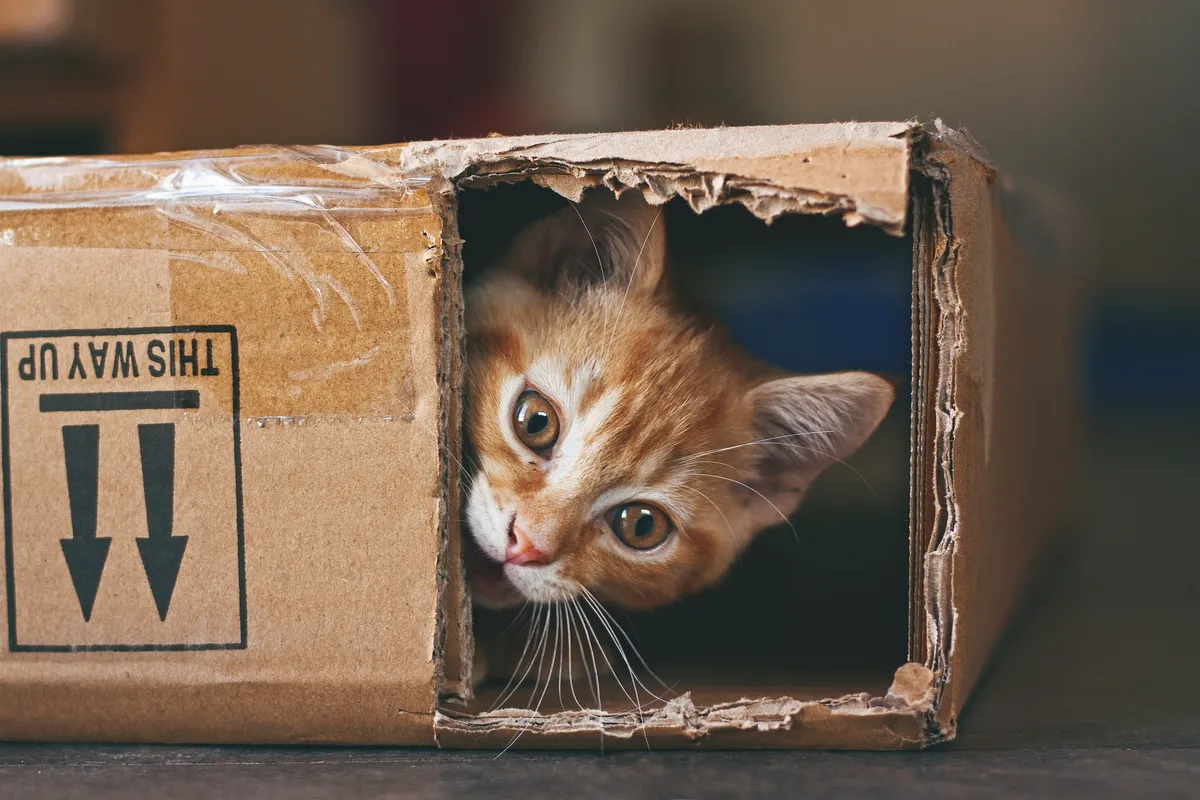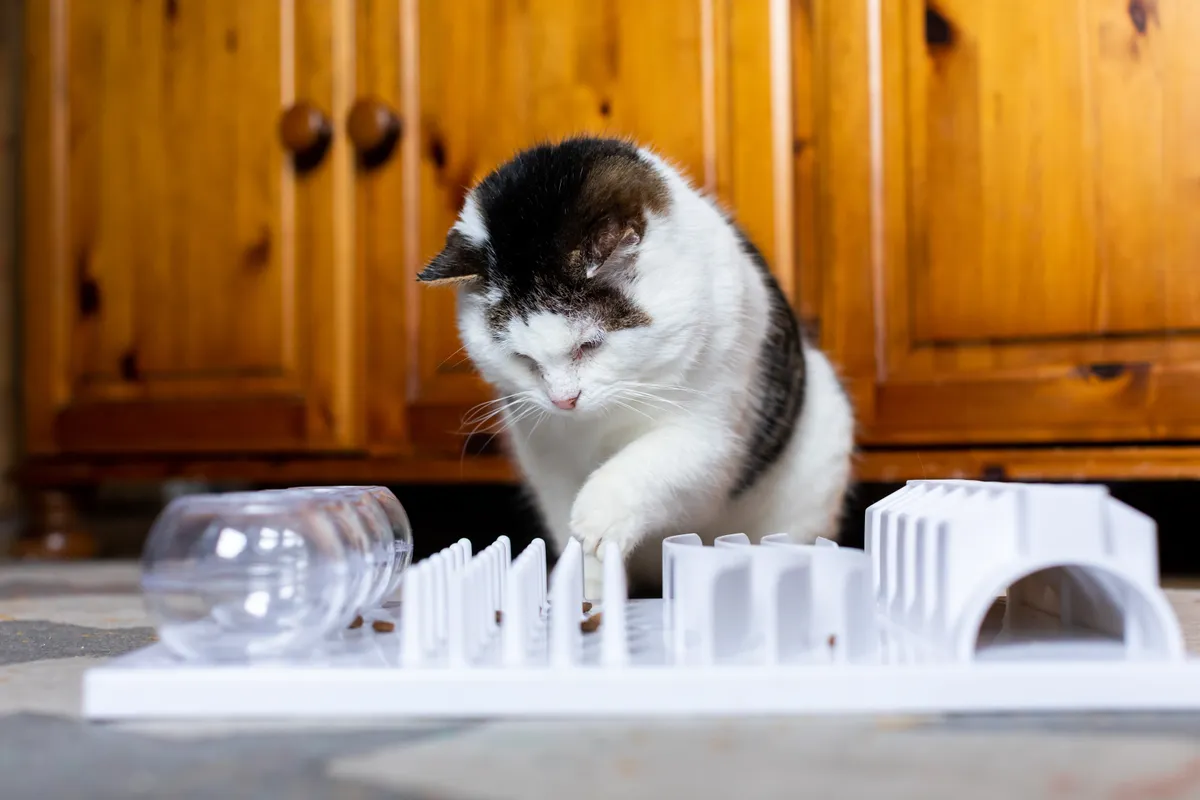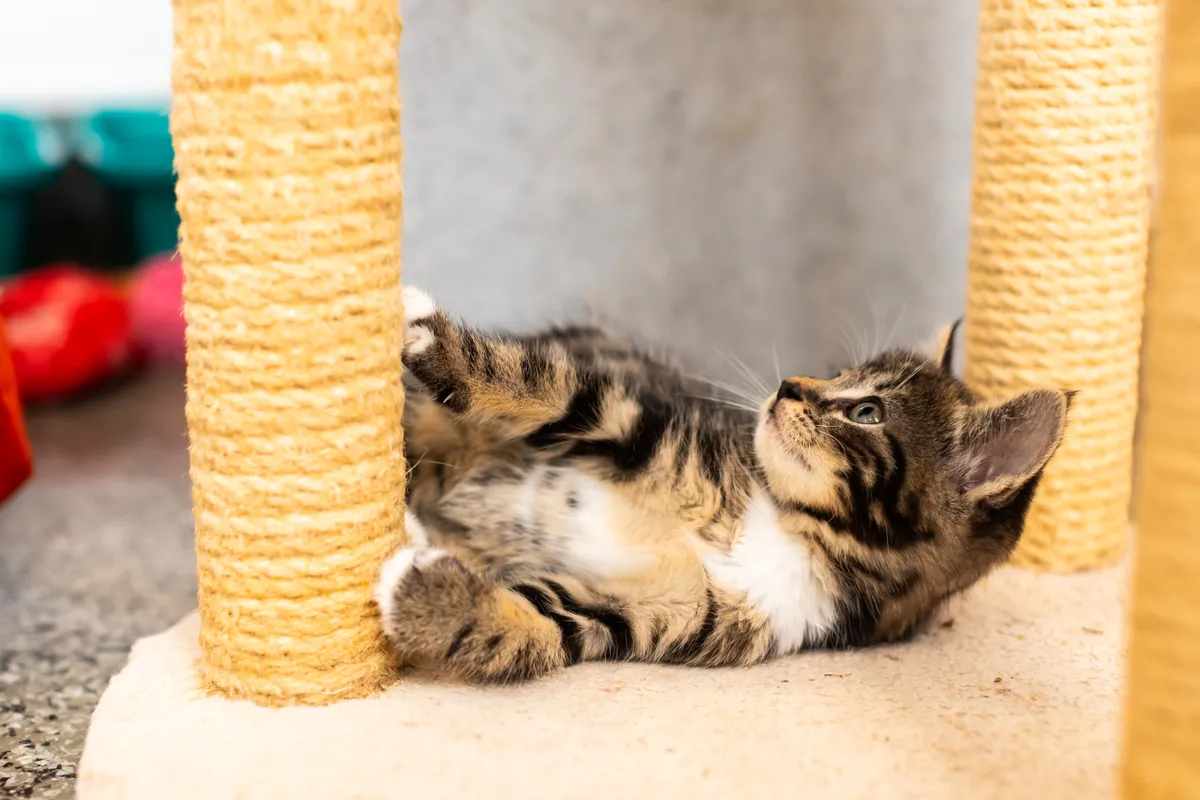Make your house cat-friendly with these tips
Whether they’re snoozing on the sofa or winding around your ankles in the kitchen, there’s no doubt that cats play a big part in our home life. Here's how to make sure your home is the purrfect pad for your cat.
- Homemade cat toys: how to make cat toys that will entertain for hours
- 'We practised DIY on a vintage caravan before renovating our home: it’s really paid off!'
- Best energy efficient air fryers for 2025
How to make your home a cat-friendly haven
High up places
Ever noticed how your cat loves to scale great heights in your home? From setting up camp on top of the wardrobe to settling on the headrest of an armchair, cats love to climb. And there’s a reason for this – cats feel more secure when they have the option to be higher up and keep an eye on their surroundings.
Have a look around your home and think of how you can create a dedicated look-out post for your cat – maybe by clearing a shelf or investing in a cat tower. Remember that elderly or less-athletic cats still need to have the option to reach slightly elevated positions, so may need a bit of help from strategically placed boxes or steps.
A space to hide and snooze

Cats are the undisputed champions of hiding, happy to curiously explore a cardboard box or tuck themselves away in a pile of laundry. They also like to sleep…a lot! When they aren’t out and about, they can spend a whopping 16 hours a day sleeping.
Having warm and comfortable hiding spaces are essential for helping your cat get the rest they need. It’s important to remember that cats often feel vulnerable when sleeping, so they need somewhere safe, hidden, and high up where they won’t be disturbed.
Hiding away is a natural part of cat behaviour, giving them the chance to rest, groom and play in peace.
Cats Protection’s Hide & Sleep® is a vet-approved all-in-one bed that provides a sleeping area, hiding place and lookout area for your cat, but you can have lots of fun coming up with your own secret spaces to match your décor.
Think soft storage boxes placed in a quiet corner, cute fabric wigwams, cosy cat igloos or simply the humble cardboard box with a soft blanket inside.
Litter tray
Probably not the nicest subject but it's essential for a happy cat! Buying a litter tray may not be the most exciting of household purchases, but is a must for cats. Even if they have access to outdoors, there may still be times when your cat needs to have access to somewhere to toilet indoors.
Make sure it’s kept well away from both your own and your cat’s eating places, and in a quiet but accessible part of the home where your cat can have privacy. If you’re not sure how to create the best toilet space for your cat, take a look at Cats Protection’s litter tray video for lots of helpful tips and tricks.
Feline dining
It’s a little-known fact that cats like to have their food and water bowls in separate places. The reason stems back to their evolutionary past, when wild cats would eat in a different area to avoid contaminating their drinking source with the remains of their prey.
While that may not be a risk in our modern homes, cats still feel happier when they can express their natural behaviour, so keeping their food and water bowls in different places is a good idea.

Cats are natural hunters, so having food just placed down for them doesn’t provide the mental and physical stimulation they need.
Get creative at mealtimes by introducing fun puzzles for them to solve before they are rewarded with food. You can do this with egg boxes, yoghurt pots, toilet rolls and more.
Scratch and stretch

A scratching post is a must for every cat-owning home but knowing where to position it is just as important. Cats like to stretch and scratch after they wake up, so place one where they like to sleep.
It’s also worth having one close to entrance and exit points – for example a cat flap – as cats enjoy a quick scratch to mark their territory.
When you’re shopping around for a scratching post, make sure it has a strong, sturdy base and is tall enough for your cat to enjoy a good stretch while they're using it.
Cat toy ideas
Playing with your cat is a great way to bond and can be endlessly entertaining for you both. You can come up with many great feline-friendly games around the home with recycled materials – a cardboard box with holes cut into it is perfect for hide and seek, while a scrunched-up ball of paper can provide plenty of chasing opportunities.
Cats enjoy exercising their minds as well as their bodies, so you can use puzzle feeders or make a pyramid out of toilet roll tubes to hide their food in – they’ll enjoy the challenge. Make sure you show cats how to use a puzzle feeder if they are new to it so they don’t become bored or frustrated.
Avoid lilies and toxic plants
Some flowers and houseplants can be very dangerous for your cat, so be careful what you bring into your home. Lilies in particular are highly toxic for cats and can quickly have fatal consequences if your cat nibbles them, or simply brushes past them and catches the pollen in their fur.
View Cat’s Protection helpful online guide to check if your houseplants are cat friendly.
Rent your home? Don’t despair!
Sadly, blanket “no pets” policies and limited cat-friendly rentals can make it difficult for renters to find a home where they can own a cat. Cats Protection is working hard on the problem, and has come up with a host of tools and information to help tenants who want to own a cat – View their Purrfect Landlords scheme online to find out more.
Cats Protection is the UK’s largest cat charity - to find more tips from the charity about creating a cat-friendly home, and a host of other cat care advice, visit cats.org.uk
Read more:
- How to make a dog-friendly house and garden
- How to stop cats pooping in your garden: 8 humane ways to stop cats using your garden as a toilet
- How to stop cats scratching furniture
- How to get rid of fleas in your home and on your pet
- How to stop your cat peeing everywhere in your home
- Moving house with cats: how to keep them happy and safe when relocating

